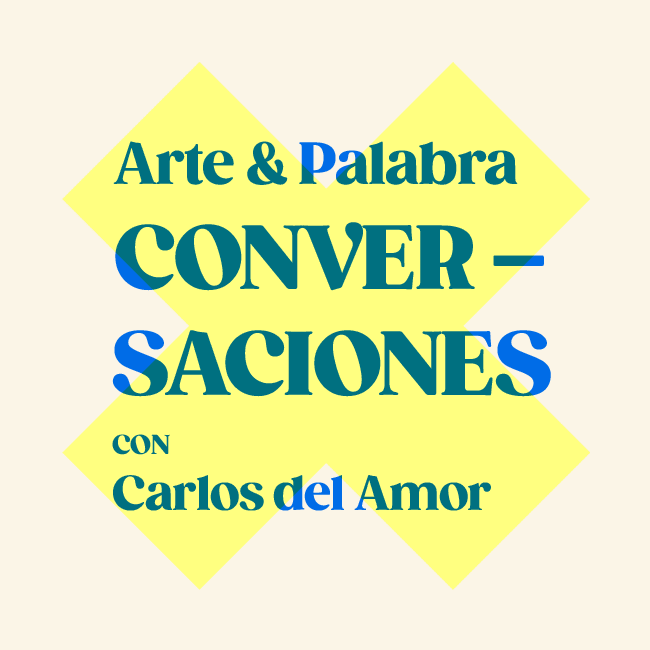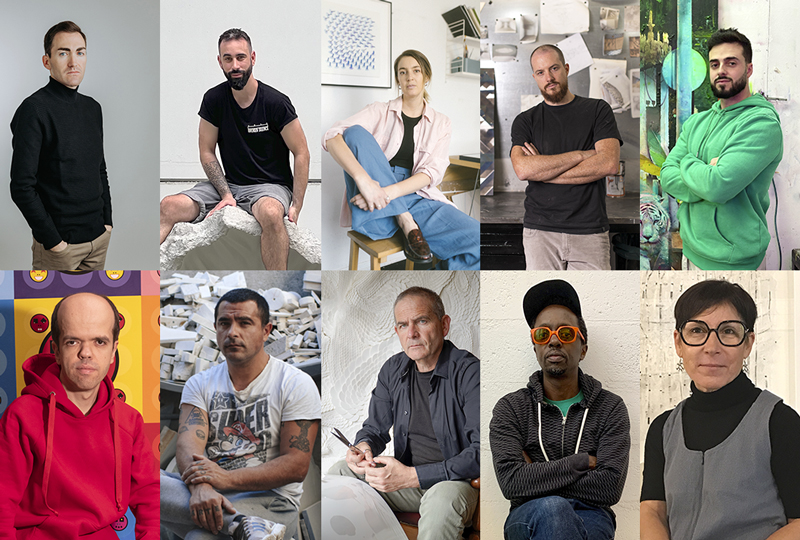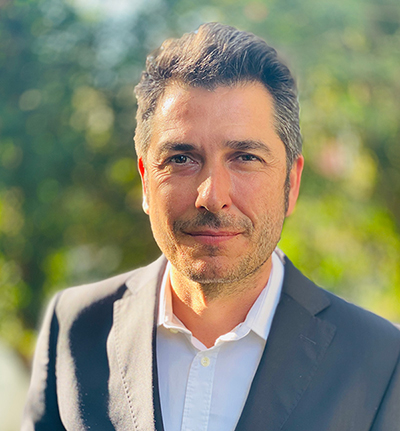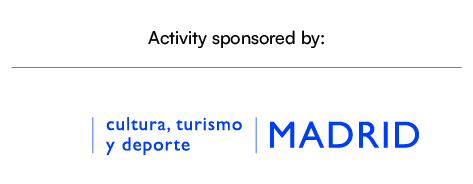ARTE & PALABRA. CONVERSATIONS WITH CARLOS DEL AMOR
Jan 30, 2024
art madrid

Art Madrid presents the interview section by cultural journalist Carlos del Amor. With his careful way of approaching the infinite worlds of creativity, Carlos del Amor reveals the artistic universe of ten creators participating in the 19th edition of Art Madrid. With this action, Art Madrid expands and consolidates its interest in bringing contemporary art closer to the public, this time through the voice of the artists who will be accompanying us during the most important event of Spanish contemporary art.
These conversations on inspiration, visual poetry, artistic commitment, imagined stories and art as a vehicle for the construction of a more fertile and humane society are intertwined in words and forms. The uniqueness of each artist has served as inspiration for Carlos del Amor to construct different ways of discovering what happens around the figure of the artist and his or her practices, in everyday life and also in the national art market.

Guest Artists. Interview section. Art Madrid'24:
Manu Iranzo. CLC Arte; Nacho Zubelzu. Galería Metro; Carla Effa. Kleur Gallery; Richard García. Galería BAT; Francesca Poza. Galería Alba Cabrera; Alejandro Monge. 3 Punts; Suncityboy. Dr. Robot Gallery; Juan Miguel Quiñones García. Pigment Gallery; Evans Mbugua. OOA Gallery; Daniel Schweitzer. Shiras Gallery.
ABOUT THE ARTISTS
The production of Manu Iranzo (Teruel, 1983) moves in that intangible plane that borders the existing frontier between what we think we have seen and what we have really seen. His immaculate precision in drawing reminds us of his origins in design, although, as in the famous riddle, we will never know which came first, drawing or design. What is certain is that in his drawings, the graphite technique goes hand in hand with a sense of timelessness and permanency, as if he wanted to keep all the moments for himself. Nacho Zubelzu (Reinosa, 1966) is an artist who loves nature, lives it and filters it in all his works. The respect and interaction with the environment make Zubelzu's work delicate, deep, virtuous and emotional, because the earth is an emotional experience, but to be excited you have to live it. He does it and he transmits it to us. Carla Effa (Santiago de Chile, 1988) creates on the basis of architecture. Wood in different planes, bright colors, paper, acrylic and repetition provoke that intoxication that has something magical about it, when, for example, a piece of the work suddenly hides and capriciously reappears, surprising the viewer with its own game of masks.
In the work of Richard García (Madrid, 1995) the asphalt jungle seems to be brewing. The color, the recognizable but undefined landscape creates layers of reality in which it would be worthwhile to get lost and then find ourselves, free and relieved of the burden that appearances generate. His work seems to be full of mirrors, mirrors that reflect the infinite details in which we can linger. Francesca Poza (Mataró, 1965) combines the written word with the real or imagined meaning that the yarns she works with have, among their many virtues. One of the most apparently fragile materials in existence, and still the artist presents us with a combination of threads that can become indestructible. It is the triumph of fragility over brute force. Her work is exactly that: poetry, literature and time; creations of beautiful originality, as subtle as they are powerful. Alejandro Monge (Zaragoza, 1988) considers the future to be a place full of questions, but he is not worried, he is rather optimistic. His sculptures are very realistic and yet they have something that separates them from what we know and places them in an alien terrain. They exist, but they are not part of this world, they seem to come from another and they seem to know more than we do about what awaits us. They are the protagonists of the chronicle that has bequeathed their time to posterity. Suncityboy (Tver, Russia, 1984) has invented a world inhabited by characters from fairytales and cultural icons that, despite their initial strangeness, instantly provoke empathy and familiarity. Everyone stops being themselves to enter a new life where humor, irony, acidity and a huge dose of energy renew our view of things, theoretically very seen.
Juan Miguel Quiñones (Cádiz, 1979) is a self-taught artist who sculpts those memories in stone so that neither air nor maturity can take them away. He works and studies with vehemence the materials with which to recreate them, and with the ingenuity that can only be achieved through the control of language and technique, he manages to make everyone who comes across his creations breathe a sigh of nostalgia. The work of Evans Mbugua (Kenya, 1979) is composed of fragments of what he has lived and collected; his entire life in an imaginary suitcase that he has been able to transfer to canvas. Past and present meet in his festive and colorful compositions, celebrating and reminding us that life is in many ways a journey, that time is not linear, and that to define what we will be, we must keep in mind what we have been and not be afraid to build ourselves a little each day. Daniel Schweitzer (Germany, 1988) uses geometry to control the emptiness that surrounds us. Using repetition as a means to reach an unattainable infinity, he is able to make sense of this concept and activate our sensory mechanisms. Schweitzer's works reach the infinity of a perfect fractal in the innumerable sensations that the human eye can have in front of one of his sculptures.

ABOUT CARLOS DEL AMOR
(Murcia,1976) Journalist, writer, scriptwriter and presenter. With more than 20 years of professional career, he is currently Deputy Head of Culture of RTVE News and presenter of the program "La matemática del espejo". He has a degree in Journalism from the Carlos III University of Madrid and a degree in Library and Information Science from the University of Murcia.
Since the beginning of his professional career, he has always been linked to cultural journalism. He teaches at different Spanish universities and has collaborated with numerous national and international publications. He has received the Vitoria Television Festival Award for his career. His reports have been awarded at festivals such as Cannes and the London Television Festival. He was recently awarded the Premio Ondas Nacional de Televisión in the category of Best Presenter.
Author of the books Retratarte. Cuando cada mirada es una historia (2022), Emocionarte. La doble vida de los cuadros (2020), Confabulación (2017), El año sin verano (2015) and La vida a veces (2013).
ABOUT SAFE CREATIVE
Arte y Palabra. Conversations with Carlos del Amor with the collaboration of Safe Creative.
Safe Creative allies with artists on the Internet to protect their rights. Today, with Generative Artificial Intelligences and NFTs, the challenges multiply and we respond to creators and artists of all kinds. Safe Creative offers a convenient and cost-effective online system that allows any creator to obtain the necessary evidence to prove their copyrights from home, using their computer, and to register all their works instantly.





















